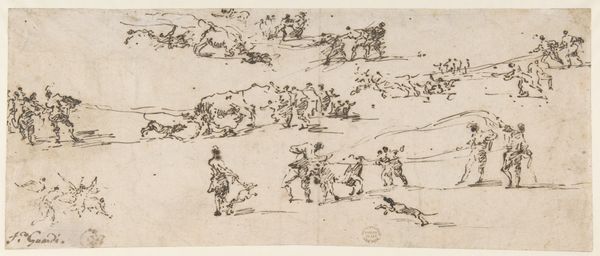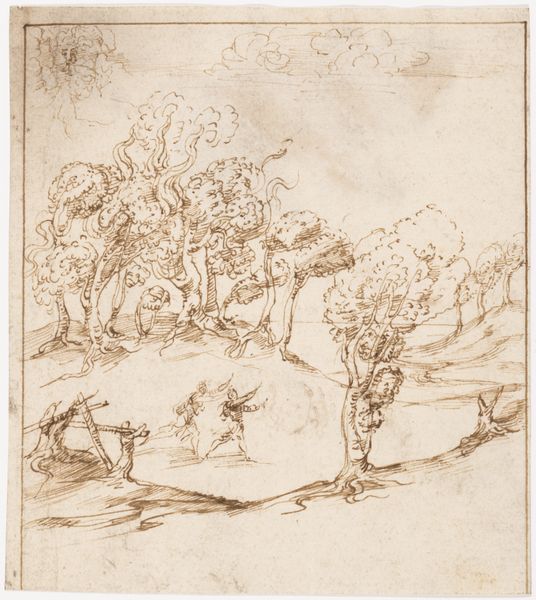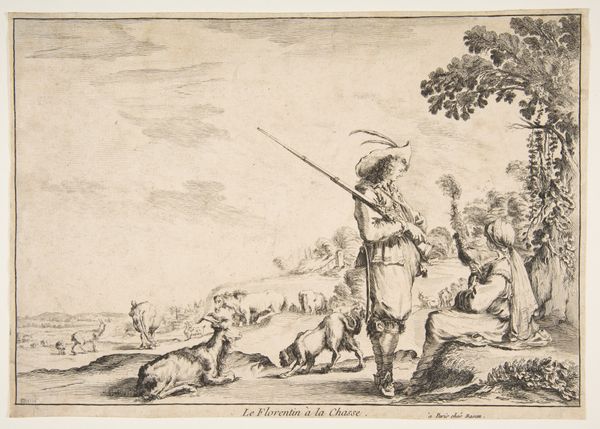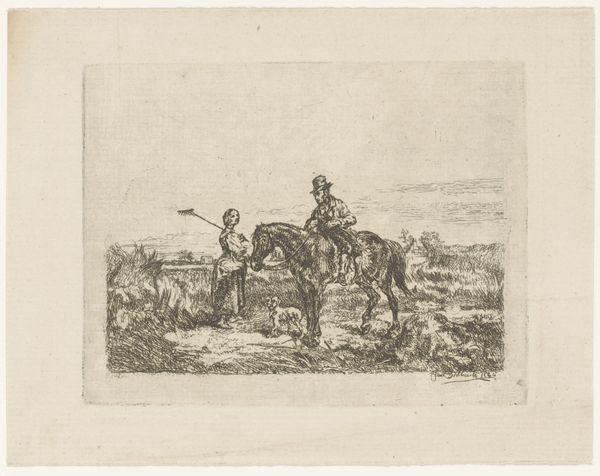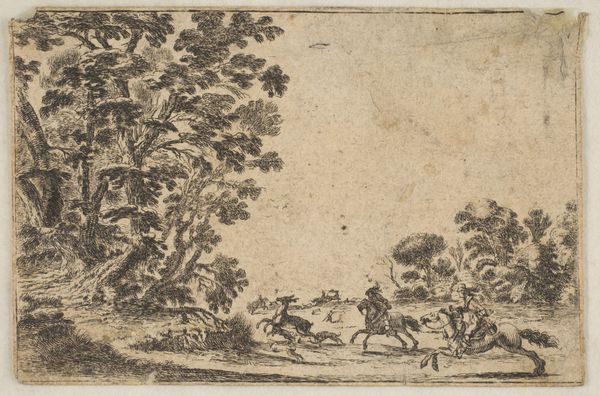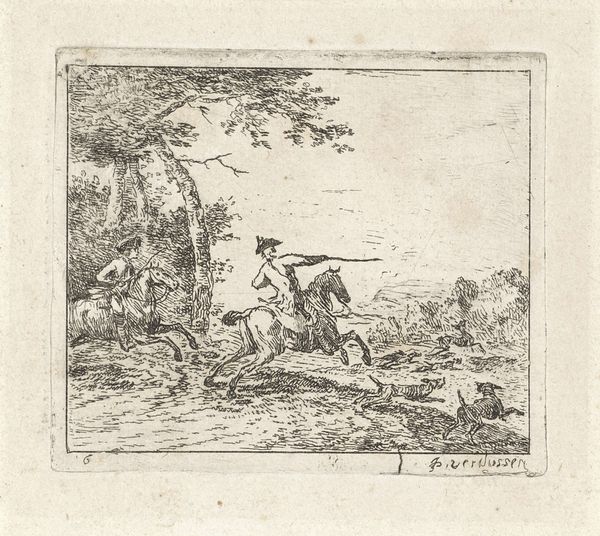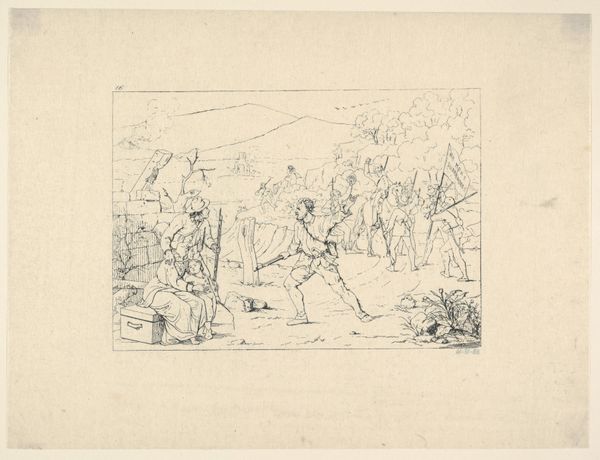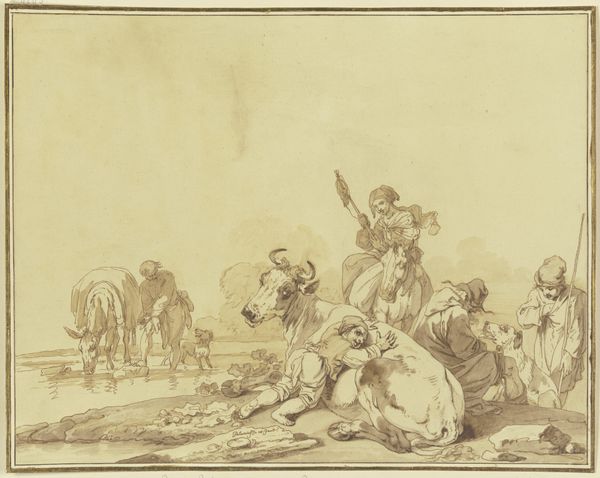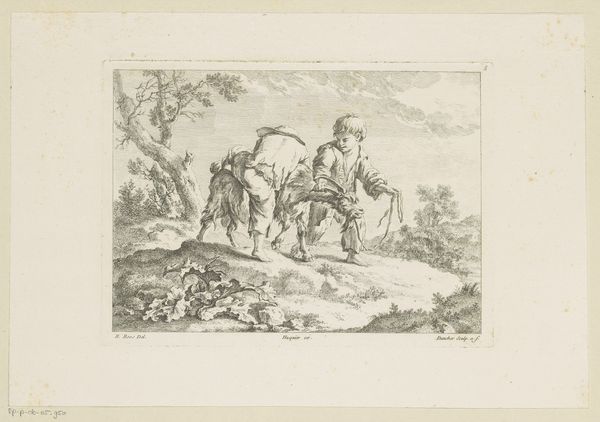
drawing, print, etching, paper, ink
#
drawing
# print
#
etching
#
pencil sketch
#
landscape
#
etching
#
paper
#
ink
#
pen-ink sketch
#
realism
Dimensions: 94 × 171 mm (image); 121 × 201 mm (plate); 153 × 219 mm (sheet)
Copyright: Public Domain
Jean-François Millet made this print, called The Two Cows, with etching on paper. Millet was part of a movement of painters in France called the Barbizon School, which flourished from the 1830s through the 1870s. They were devoted to depictions of rural life. This simple image of a farmer with two cows gives us insight into the enormous social changes then underway in France. The country was quickly industrializing, and many artists turned away from urban life to focus on the countryside. Yet even here, the relationship between humans and nature is complex. Millet’s composition, with its open fields and strong horizontal lines, speaks to the way land was being used and managed. One can research nineteenth-century agricultural practices and land ownership laws to understand the social meaning of this seemingly simple scene. The Art Institute of Chicago's rich collection of prints and drawings provides resources for deeper study of this work. The meaning of art is always contingent on its social and institutional context.
Comments
No comments
Be the first to comment and join the conversation on the ultimate creative platform.

